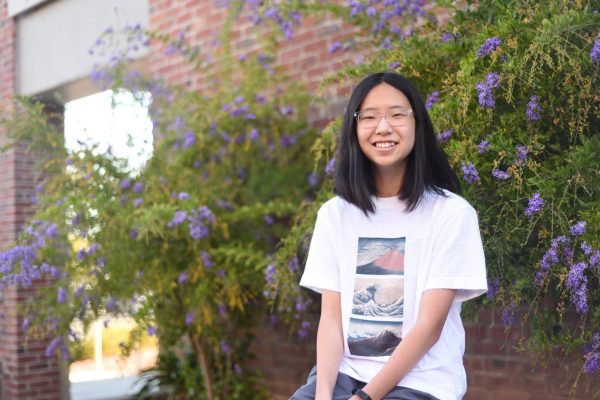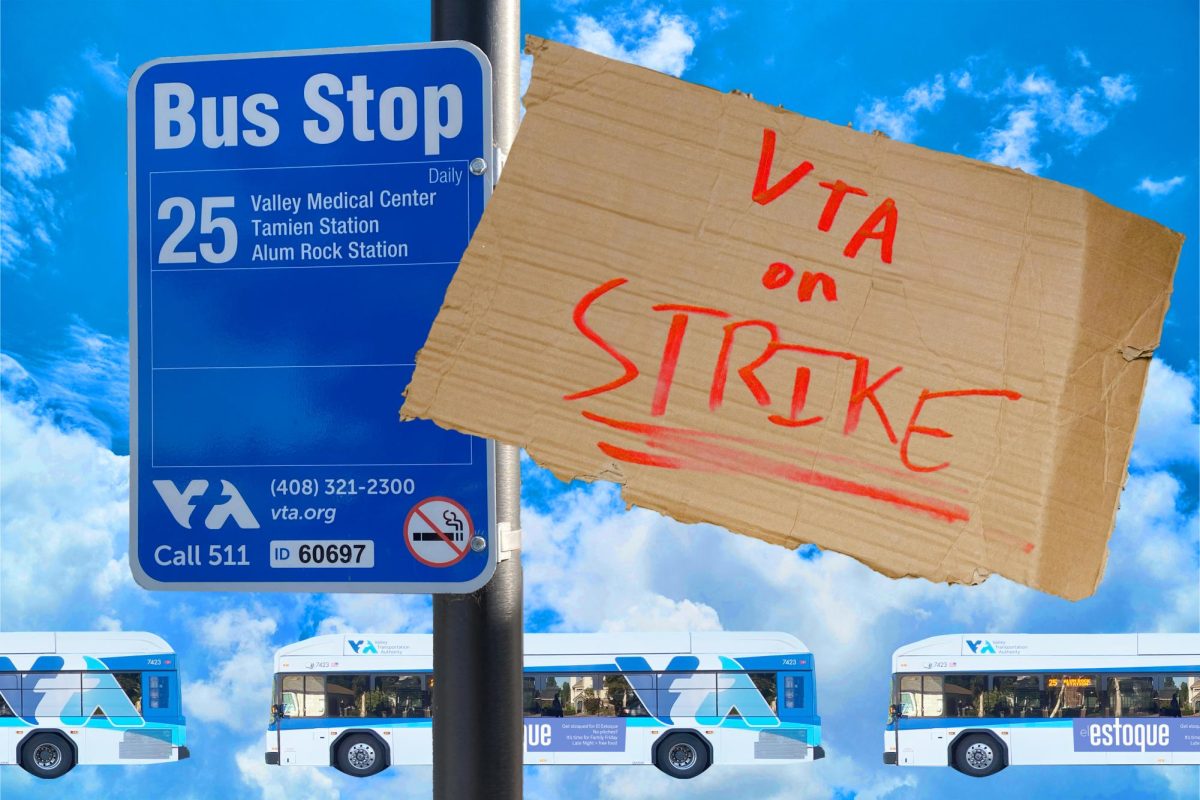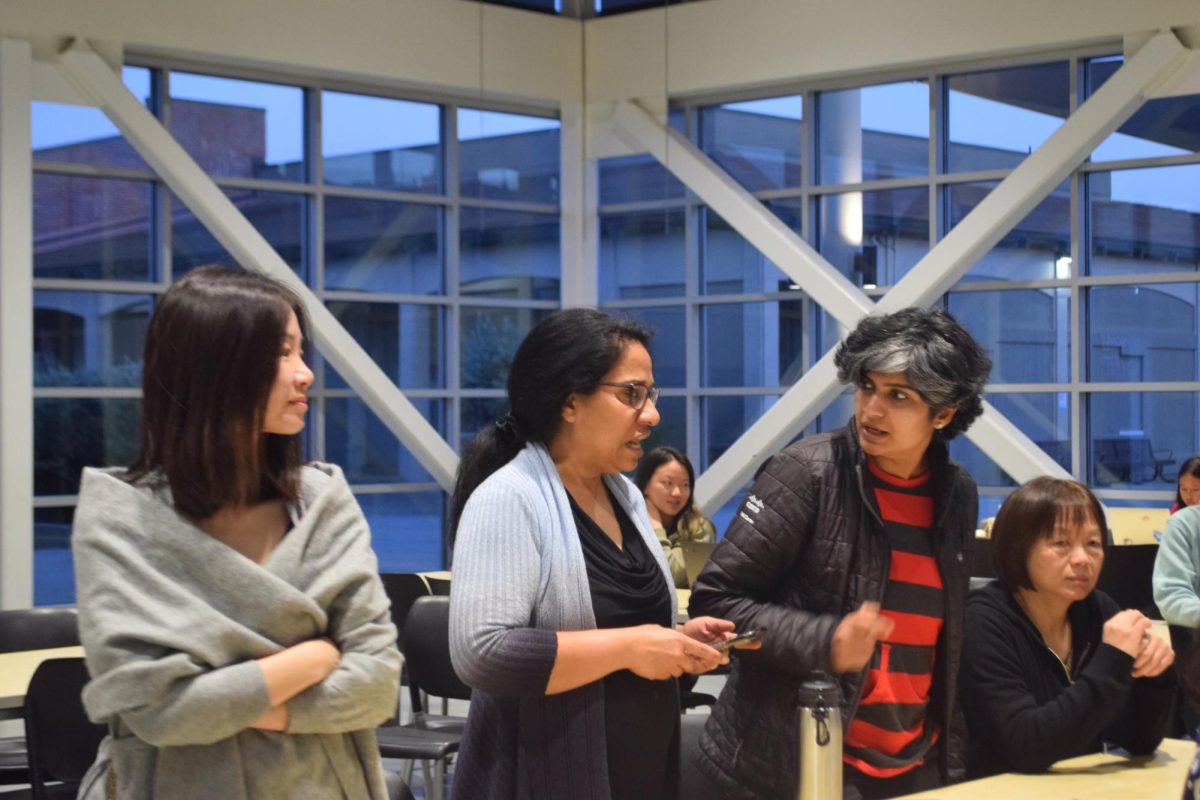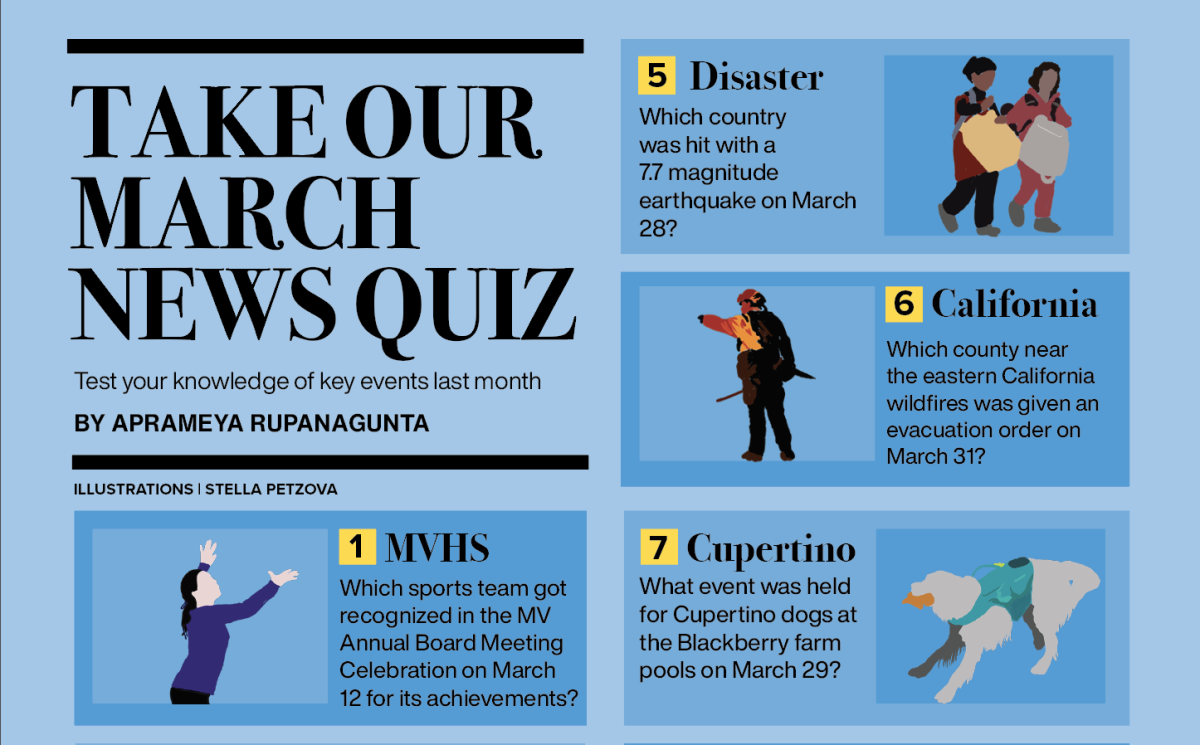The Cupertino City Council approved Phase 2A of the Stevens Creek Bike project with a close vote of 3-2 on Feb. 4. Phase 2A aims to construct Class IV bike lanes from De Anza Boulevard to Wolfe Road in order to keep bikers, drivers and pedestrians safe. Class IV bike lanes are bike lanes that are separated from vehicular traffic through some physical form of separation, such as concrete barriers — the typical infrastructure used in the project. With a budget of $1.8 million, Phase 2A is expected to begin construction in May 2025.
The overall Stevens Creek Bike Project focuses on the rebuilding of Class IV bike lanes across intersections on Stevens Creek Boulevard, labelled the top priority in the 2016 Bicycle Transportation Plan. Phase 1, spanning from Wolfe Road to Tantau Avenue, was completed in Jan. 2021. Currently, the bike lane from N Wolfe Road to De Anza Boulevard is separated by a Class II bike facility – a painted green bike stripe on the side of the road without any physical barrier.
However, concerns have emerged regarding the effectiveness and safety of the concrete barriers that have already been installed on similar roads, such as McClellan Road. Cupertino Mayor Liang Chao notes that while the separation is somewhat beneficial, the rigid structure could introduce new risks.
“If you’re riding on a narrow road with concrete on both sides and you accidentally hit any of the sides, you’ll likely fall,” Chao said. “If you have a third grader that’s riding very slowly and you are a high schooler who wants to get to school on time, and you are blocked by that third grader, you actually will create anxiety that might even make it risky for both riders. Instead, if you have a bump with a softer edge, it’s possible to pass without injury. Another thing with the concrete barrier is the fact that at night, it’s almost impossible to see it.”
Senior Senna Rogoyski, an Advisory Board Member for WalkBikeCupertino (an advocacy group for bike safety), agrees that the current barrier system poses an issue. However, she mentions the importance of coming up with bike-safe solutions, stressing that the solution shouldn’t be to abandon the plan altogether but rather improve on it.
“While the current design might not have reflective materials, it’s something worth considering as the project moves forward,” Rogoyski said. “I think that it would be important to keep monitoring the situation to ensure that the barriers are clearly marked and safe for both cyclists and drivers, especially during nighttime. I also understand that debris can be an issue, but I think the city should make regular maintenance a priority to ensure the bike lanes stay clear. That way, cyclists can use them safely without worrying about obstacles.”
As a cyclist herself, Rogoyski supports the project’s long-term goals, especially given her personal experiences navigating Stevens Creek. She believes this safety measure would give bikers a certain peace of mind while biking.
“Without a proper bike lane, it can feel unsafe, especially with the fast traffic and limited space for bikes,” Rogoyski said. “I’ve had a few close calls, especially when trying to cross intersections. Drivers aren’t always looking out for cyclists, and with the lack of protected lanes in some spots, I’ve had to quickly dodge cars a couple of times. It definitely made me realize how badly we need safer infrastructure.”
Beyond the infrastructure itself, Rogoyski believes that the project represents a broader shift in Cupertino community values towards sustainable transportation. She says this project would effectively foster a safer bike-centric community that encourages people to choose bikes over cars.
“I think this approval is a big step forward for bike infrastructure in Cupertino,” Rogoyski said. “It shows that the city is serious about making biking safer and more accessible, and I hope this will set the tone for more bike projects in the future, maybe even expanding to other areas of the city.”
WalkBikeCupertino Board Member and senior Aaryan Doshi shares this vision. He believes that the narrow approval vote of 3-2 reflects car-focused preferences among city leaders, but is hopeful that future votes will continue to lean towards more bike-friendly solutions.
“That is the goal: to make Cupertino have biking as its main form of transportation, but to do so in a safe manner,” Doshi said. “I think a lot of other cities, like Sunnyvale, have more robust infrastructure, and we’re hoping that through voting like this, we can help to infuse that element of bike friendliness within Cupertino.”
Similarly, Chao also takes inspiration from nearby cities. She has been advocating for alternatives to concrete barriers since 2019 out of concern that concrete barriers might add more risks for bicyclers. The cost of construction on the concrete barrier is around $300,000, according to Chao, while bollards, a cheaper alternative, would be about $70,000.
An example of bollards on McClellan Road
“Do you want to invest five or six times as much in terms of cost just to make it 10% safer?” Chao said. “If you have driven around the other cities, to San Jose, Santa Clara or other cities, you can see a lot more bike path improvements, but they use bollards or other cheaper materials rather than building concrete. Bikers can ride through them.”
Rogoyski understands that bollards may provide a cheaper alternative, but after seeing the concrete barriers built on McClellan Road, she believes that building with concrete specifically is better. She feels that having a protected, dedicated space away from cars significantly changes how safe she and other bikers feel while on the road. She’s noticed more people using the bike lanes since the barriers were installed, which she sees as a sign that the community is embracing safer, more sustainable transportation.
Despite the differing opinions in both the community and the city council, Doshi emphasizes not “immediately disregarding where the other side is coming from” and trying to understand the various concerns that people may have. He hopes that car-centered citizens see the validity of the proposed ideas on their own. Chao also agrees, as her State of the City Address centered around the theme of “respecting those whom you disagree with” is a reflection of her own thoughts surrounding the bike project.
“When a council member votes against the project, it doesn’t mean they are not for bicycle safety,” Chao said. “Often, we have a common goal, but we have different approaches towards reaching our common goal. Every project will create concern for some people. We cannot just ignore them — we should listen to them and do our best to address them.”
For Doshi, WalkBikeCupertino represents an opportunity for him to address concerns and respectfully persuade members of the city council to adopt more bike-friendly policies, especially to help MVHS bicyclers. He looks forward to seeing the final project constructed and hopes that the city council, and Cupertino at large, will be able to recognize the importance of each cycler and take action to improve bicycle safety.
“It is frustrating to hear people say that the number of accidents we have is so minimal, it’s so small, it’s only 15, only 20,” Doshi said. “But at the end of the day, every life matters. You can’t quantify how much a human being is worth.”










